Indian Polity and Governance: August 2025 Current Affairs | General Test Preparation for CUET UG - CUET Commerce PDF Download
The Constitution (130th Amendment) Bill, 2025
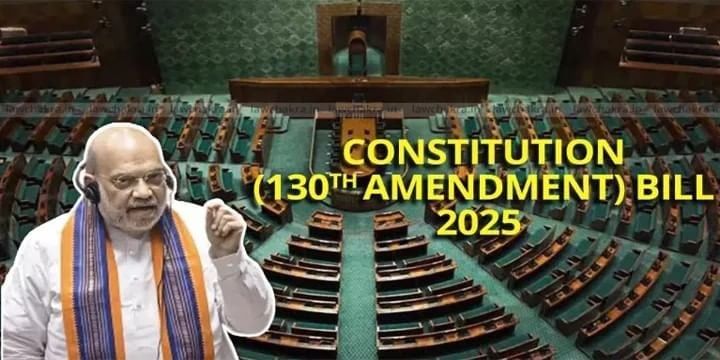
Why in News?
The Union Home Minister is preparing to introduce three significant bills in the Lok Sabha aimed at establishing a legal framework for the removal of the Prime Minister, Union Ministers, Chief Ministers, and Ministers in States and Union Territories (UTs) who are arrested and detained due to serious criminal charges.
Key Takeaways
- The three bills include the 130th Constitutional Amendment Bill, Jammu and Kashmir Reorganisation (Amendment) Bill, and Government of Union Territories (Amendment) Bill.
- The 130th Constitutional Amendment Bill specifically addresses the conditions under which leaders must resign if detained.
Additional Details
- Scope: The bill applies to the Prime Minister, Chief Ministers, and Ministers at the Union, State, and Union Territory levels.
- Grounds for Removal: A leader must resign if arrested and in custody for 30 consecutive days on charges punishable by five years or more.
- Reappointment: Leaders can be reappointed after their release from custody.
- Objective: To prevent prolonged tenures of arrested leaders in office, exemplified by cases like that of Delhi CM Arvind Kejriwal.
- Amendments to Articles:
- Article 75: Introduces a provision for the automatic resignation of Union Ministers if detained for serious offenses.
- Article 164: Similar provisions for Chief Ministers and State Ministers regarding automatic removal upon detention.
- Article 239AA: New Section 5A specifies that the CM and Ministers of Delhi cease office if detained for 30 days under serious charges.
- The rationale behind this bill is to ensure that office bearers maintain public trust and do not compromise governance during periods of detention.
This bill promotes the integrity of democracy by aligning ministerial positions with constitutional morality and accountability.
Consider the following statements:
- 1. According to the Constitution of India, a person who is eligible to vote can serve as a minister in a State for six months even if not a member of the State Legislature.
- 2. According to the Representation of People Act, 1951, a person convicted of a criminal offense and sentenced to imprisonment for five years is permanently disqualified from contesting elections, even after release.
Options: (a) 1 only (b) 2 only (c) Both 1 and 2 (d) Neither 1 nor 2
Answer: Option D
Control of Election Officials: EC vs States
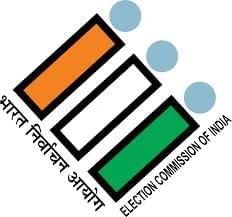
Why in News?
The Election Commission of India (ECI) is currently in a dispute with the West Bengal government regarding the disciplinary authority over election officials. The state has declined to take action against four officials accused of electoral roll tampering, citing that no elections have been announced and the Model Code of Conduct is not applicable. This disagreement has reignited the ongoing debate about the extent of the ECI's control over state officials assigned to election duties.
Key Takeaways
- The ECI's authority over election officials is constitutionally backed and has evolved through amendments and legal frameworks.
- The ongoing standoff between the ECI and West Bengal highlights persistent tensions over the enforcement of disciplinary measures.
- Historical conflicts, notably during T N Seshan's tenure, underline the challenges faced by the ECI in asserting its authority.
Additional Details
- Constitutional Vision for the ECI: During the Constituent Assembly debates, it was emphasized that the Chief Election Commissioner should have protections akin to those of a Supreme Court judge, ensuring independence from the executive branch.
- 1988 Amendments: These amendments to the Representation of the People Acts of 1950 and 1951 formally placed election officials under the ECI's supervision, granting it clear authority over them during elections.
- Historical Context: The conflict peaked during the 1993 Ranipet by-election, where T N Seshan's demand for central forces led to a temporary halt of numerous elections until the issue was resolved.
- Supreme Court Intervention: The judicial system intervened to affirm the ECI's authority, leading to a negotiated settlement in 2000 that clarified the ECI's disciplinary powers.
- Current Options for the ECI: In light of the West Bengal government's resistance, the ECI can summon the Chief Secretary, involve the Centre, or approach the courts to enforce compliance.
This ongoing situation illustrates that while the ECI's authority is legally recognized, practical challenges remain as state governments sometimes resist its directives, demonstrating the complexities of electoral governance in India.
Office of the Chief Election Commissioner (CEC)
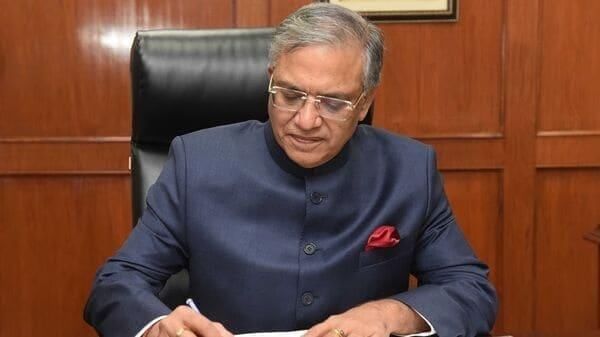 Why in News?
Why in News?
The Opposition, represented by the INDI Alliance bloc, is contemplating a motion to remove the Chief Election Commissioner (CEC) in Parliament, highlighting concerns over election management and integrity.
Key Takeaways
- The Election Commission of India (ECI) is a permanent constitutional body established on 25 January 1950, recognized annually as National Voters Day.
- The ECI is governed by Articles 324 to 329 in Part XV of the Constitution, responsible for conducting elections at various levels including the Lok Sabha, Rajya Sabha, and State Legislative Assemblies.
Additional Details
- Establishment: The Election Commission was established on 25 January 1950 and plays a crucial role in maintaining the democratic process in India.
- Structure: Since 1993, the ECI operates as a three-member body consisting of the Chief Election Commissioner (CEC) and two Election Commissioners.
- Status of CEC: The Chief Election Commissioner enjoys the same salary, status, and perks as a judge of the Supreme Court of India, ensuring independence and authority.
- Appointment Process: The CEC and other Election Commissioners are appointed by the President of India based on recommendations from a selection committee led by the Prime Minister.
- Tenure: The CEC serves a term of six years or until reaching 65 years of age, whichever comes first.
- Removal Process: The CEC can only be removed on grounds of misbehavior or incapacity, similar to the procedure for a Supreme Court judge, requiring a two-thirds majority in both Houses of Parliament.
The integrity and functioning of the Election Commission are paramount to maintaining democratic values in India. Any motion for the removal of the CEC underscores the critical nature of fair election practices in the country.
Transforming India’s Electoral Landscape
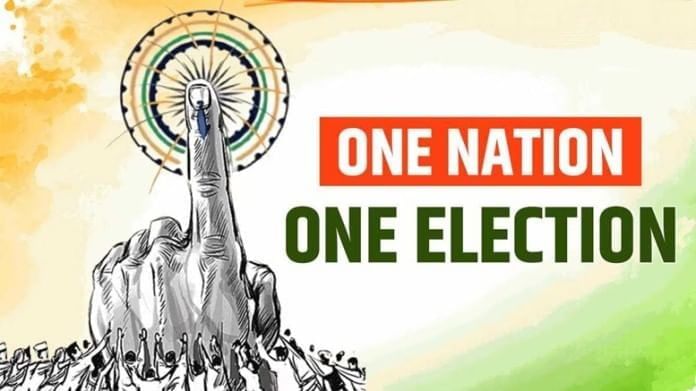
Why in News?
The Election Commission of India (ECI) has introduced various reforms to improve the electoral process, focusing on transparency, voter participation, and the credibility of democracy.
Key Reforms by the Election Commission
1. Electoral Roll Management
- The ECI plans to delist 476 inactive Registered Unrecognised Political Parties (RUPPs) to keep the political party list accurate.
- Electoral rolls were revised for by-elections in four states, marking the first special summary revision in 20 years.
- A special intensive revision of the electoral roll in Bihar was conducted to ensure accuracy.
- Duplicate EPIC (voter) cards were eliminated nationwide, providing unique identification numbers to voters.
2. Technology-Driven Transparency and Monitoring
- The ECI launched ECINET, a digital platform consolidating over 40 applications for electors, voters, and political parties.
- Digital index cards and reports were introduced for better access to election-related data at the constituency level.
- 100% webcasting of polling stations was implemented to monitor the polling process.
3. Booth-Level Improvements
- Standard photo ID cards were issued to Booth Level Officers (BLOs) to enhance transparency and public trust.
- Polling stations were limited to 1,200 voters each to reduce crowding and improve efficiency.
4. Voter Verification and Accuracy
- Mandatory VVPAT slip counting was enforced in cases of mismatch to ensure vote counting accuracy.
Challenges Facing India’s Electoral Process
1. Rising Election Expenditure
- The gap between actual election expenses and the legal limit is increasing.
- Candidates and parties often exceed spending limits, leading to underreporting and shadow financing, which fuels corruption and black money.
2. Criminalisation of Politics
- Candidates with criminal backgrounds are winning elections, supported by a politician-criminal nexus.
- In the upcoming 2024 Lok Sabha elections, a significant percentage of newly elected MPs are facing criminal cases.
3. Voter Disenfranchisement and Turnout Issues
- Challenges like bogus voting, missing names in electoral rolls, and low urban turnout persist.
- Internal migrants, the elderly, and differently-abled citizens face barriers in exercising their voting rights, affecting inclusivity.
4. Freebie Politics and Populist Promises
- The culture of offering unsustainable freebies during elections undermines fiscal responsibility and governance.
- Voters are influenced by short-term benefits rather than long-term development plans.
- The absence of clear guidelines makes it hard to differentiate between welfare schemes and fiscal populism.
5. Electoral Violence and Booth-Level Vulnerabilities
- Although reduced, incidents of violence, voter intimidation, and disclosure of booth-level voting patterns still occur.
- Weak booth management in sensitive areas compromises the integrity of elections.
- The lack of totalizer machines exposes communities to potential post-poll reprisals.
6. Technological and Cyber Threats
- The rise of deepfakes, misinformation, and social media manipulation poses new threats to electoral integrity.
7. Electoral Roll Manipulation
- Allegations of electoral roll manipulation and duplicate EPIC numbers undermine the credibility of voter lists and public trust.
8. Lack of Inner-Party Democracy
- Political parties operate in a centralized and opaque manner, dominated by dynasties.
- The lack of transparent candidate selection and accountability contradicts democratic principles and hinders the emergence of genuine leadership.
What Steps are Required to Further Strengthen India’s Electoral Framework?
- Electoral Finance Reform:Introduce partial state funding, as suggested by the 2nd ARC, which includes reimbursement for valid expenses and requires digital disclosure of donations over a certain amount.
- Regulate anonymous corporate donations.
- Enhance audits by the CAG and ECI.
- Create a public portal for election spending to limit financial influence and build trust among voters.
- Consider including political parties under the Right to Information Act, 2005.
- Promoting Inner Party Democracy:Political parties are crucial to democracy, but many operate like closed, family-run businesses.
- The law should require regular internal elections.
- Ensure transparent processes for selecting candidates.
- Require audited party constitutions.
- The 1999 Law Commission Report suggested a system for regulating inner party democracy.
- Regulating Digital Campaigns & Deepfakes:Require clear disclosure labels on all political advertisements, including details about the sponsor, funding, and target audience.
- Set up a National Deepfake Detection Cell, in collaboration with IITs and CERT-In, to monitor social media in real-time.
- Implement strict rules for removing misleading content, with penalties for platforms that do not comply.
- Launch initiatives to educate voters about algorithmic bias, deepfakes, and misinformation.
- Strengthening the ECI:The Election Commission of India (ECI) should have financial independence, with its funding coming from the Consolidated Fund of India.
- Establish regional ECI offices with permanent staff for better monitoring across India's diverse constituencies.
- Conduct regular performance evaluations of electoral processes by parliamentary committees to improve credibility.
- Create a permanent, independent group of officers within the ECI to ensure impartiality and reduce reliance on government bodies, eliminating conflicts of interest.
- Electoral Process Reforms:Expand the use of totalizer machines nationwide to blend votes across polling stations, preventing the identification of voting patterns at specific booths.
- Ensure consistent electoral rolls and strict adherence to the Model Code of Conduct.
- Limit campaign durations to ensure fairness and increase voter confidence.
- Towards Simultaneous & Sustainable Elections:Test the concept of One Nation, One Election at local and state levels.
- Implement a permanent national electoral roll and a common voter ID to minimize duplication.
- Use savings from simultaneous elections to improve governance.
- Gradually introduce a fixed schedule for elections to make them more cost-effective and efficient.
Conclusion
A resilient democracy rests on the strength of its electoral foundations. Strengthening independence of institutions, enhancing transparency, widening voter participation, deepening inner-party democracy, and embracing technology are indispensable. Only through such holistic and sustained efforts can India safeguard the integrity, credibility, and fairness of its electoral system and truly uphold the spirit of a vibrant democracy.
Supreme Court’s Intervention in Electoral Roll Revision - Continuity with Past Judgments
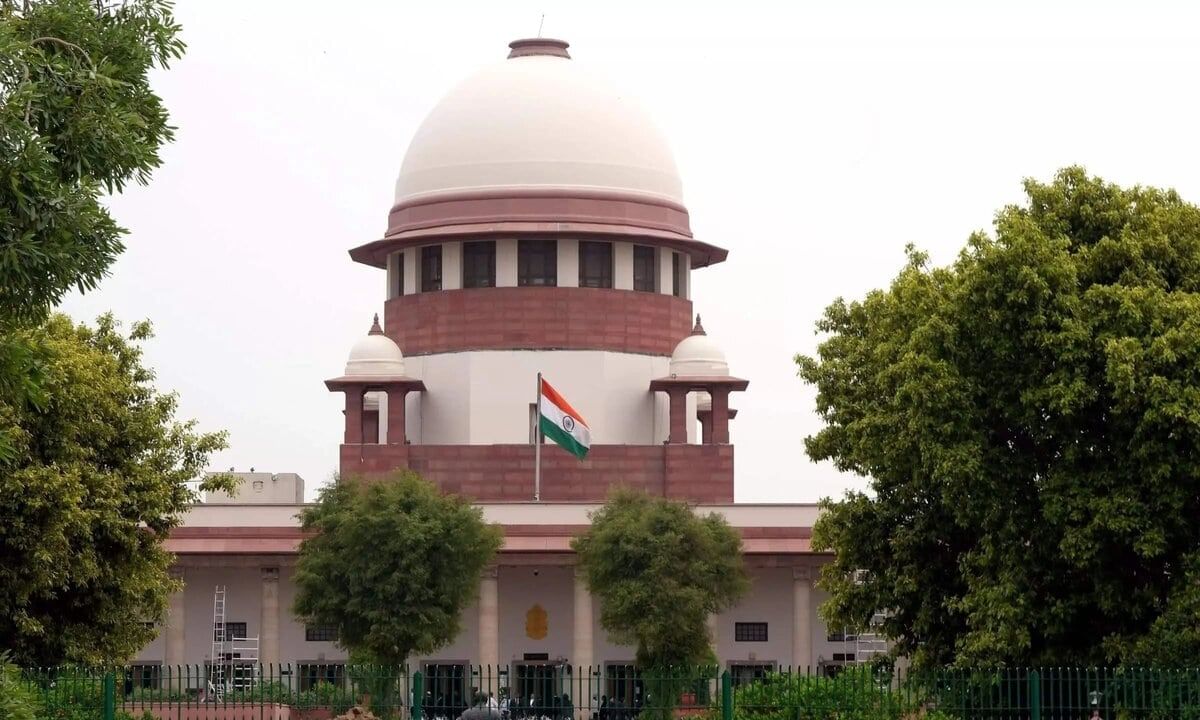
Why in News?
The Supreme Court’s (SC) recent ruling in the case of Association for Democratic Reforms (ADR) vs Election Commission of India (2025) addresses the Special Intensive Revision (SIR) of electoral rolls in Bihar, reflecting its earlier landmark decision in Lal Babu Hussain vs Electoral Registration Officer (1995). This case highlights critical issues surrounding citizenship verification, voter exclusion, and the constitutional right to franchise.
Key Takeaways
- The SC emphasized that voters should not be required to prove citizenship without credible evidence against them.
- The SC directed the Election Commission of India (ECI) to enhance transparency in the electoral roll revision process.
- The ruling shifts the burden of proof back to the state, reinforcing citizens' rights.
Additional Details
- Historical Parallel - Lal Babu Hussain Case (1995): In this case, the ECI sought to declare certain voters non-citizens. The SC ruled that electoral registration officers must conduct thorough inquiries and consider all evidence provided by the voters.
- Present Issue - Special Intensive Revision (SIR), Bihar: The SIR lacks explicit statutory backing under the Representation of the People Act (RPA), 1950, and the Registration of Electors Rules, 1960. ECI aimed to remove non-citizens but relied solely on the 2003 electoral roll and a narrow set of identity documents, shifting the burden of proof to citizens.
- Supreme Court’s 2025 Order: The SC mandated that the ECI make draft electoral rolls accessible and searchable, provide reasons for voter exclusions, and accept a wider range of identity documents, including Aadhaar and Electoral Photo ID Cards (EPIC).
- Democratic Principles at Stake: The SC’s decision aims to uphold the principles of universal adult suffrage, contrasting the risks of exclusionary practices presented by the SIR.
In conclusion, the SC’s insistence on transparency and fairness in electoral roll revisions is expected to fortify citizen-centric democracy in India. As the nation progresses towards Viksit Bharat@2047, reforms in voter registration must evolve to create a robust, inclusive, and legally accountable system that upholds universal suffrage.
When can Courts order a Recount of Votes?
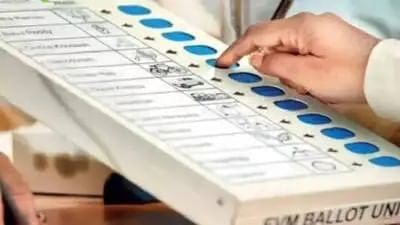
Why in News?
The Supreme Court has recently recounted electronic voting machine (EVM) votes for the first time in its history, resulting in the overturning of an election outcome for a sarpanch in Haryana.
Key Takeaways
- Supreme Court's role in recounting votes.
- Legal framework for challenging election results.
- Eligibility and requirements for filing election petitions.
- Judicial standards for proving corrupt practices.
Additional Details
- Legal Framework for Challenging Election Results:
- For Parliamentary, Assembly, and State Council elections, challenges can be made through an election petition in the High Court of the respective state.
- Local government elections require petitions to be filed in district-level civil courts.
- Only candidates or electors involved in the election can file a petition, which must be submitted within 45 days of the election results being declared.
- Petition Requirements: Petitions must include a concise statement of material facts and specific allegations of corrupt practices, detailing names, dates, and locations.
- Judicial Approach: The Supreme Court treats allegations of corrupt practices as quasi-criminal, necessitating a high standard of proof. Vague petitions are typically dismissed.
- Grounds for Invalidating an Election: Courts can annul elections based on bribery, disqualification of candidates, improper acceptance/rejection of nomination papers, and non-compliance with constitutional or election laws affecting results.
- Recount of Votes: Courts may order a recount only if the petitioner presents specific material facts and evidence of probable counting errors. Recounts are usually conducted at the election site, with exceptions like the Panipat case where the Supreme Court recounted on its premises.
- Declaring a New Winner: While rare, courts can declare a new winner if evidence demonstrates that the petitioner or another candidate legitimately had a majority of valid votes or would have won if not for corrupt practices. This requires concrete evidence of tainted votes, as illustrated by the Supreme Court’s intervention in the February 2024 Chandigarh mayoral election.
In summary, the judicial system provides a structured process for challenging election results and recounting votes, emphasizing the integrity of the electoral process and the need for transparent evidence in disputes.
Master of Roster - SC vs. HC, Judicial Authority, and Limits of Intervention
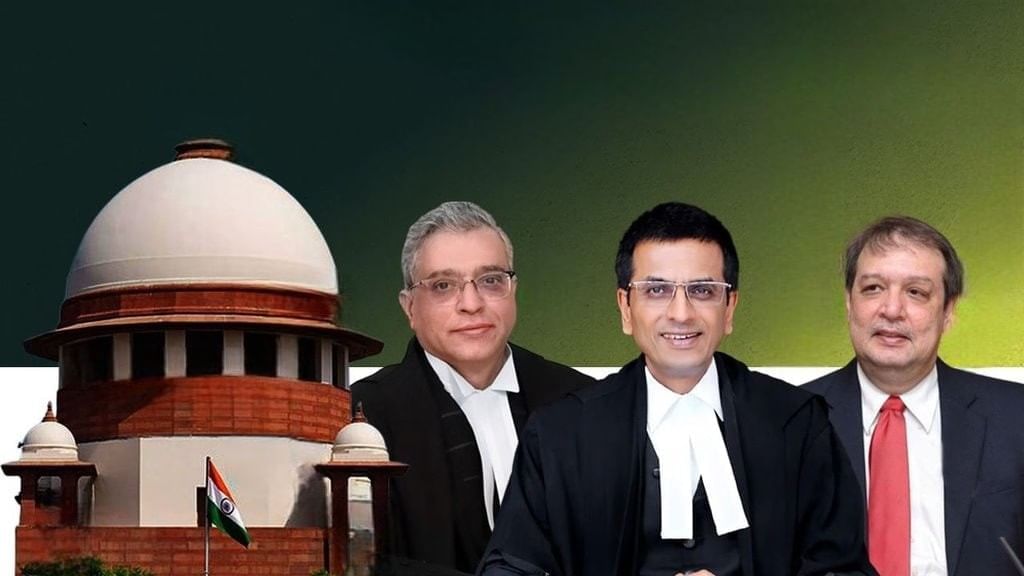
Why in News?
The recent reprimand of an Allahabad High Court (HC) judge by the Supreme Court (SC) for an "absurd" ruling has sparked renewed discussion on the extent of the SC's authority to interfere in the internal operations of High Courts, especially regarding the exclusive 'Master of Roster' powers held by the Chief Justice of a State HC. This situation raises significant constitutional questions regarding judicial independence, institutional integrity, and the SC's powers under Articles 141 and 142.
Key Takeaways
- The Supreme Court criticized a High Court judge, leading to discussions on judicial intervention limits.
- Concerns have been raised about the balance between judicial oversight and the autonomy of High Courts.
Additional Details
- Background Incident: An SC Bench comprising Justices J.B. Pardiwala and R. Mahadevan instructed that Justice Prashant Kumar from the Allahabad HC be assigned to work with a senior judge and removed from the criminal roster until retirement, due to an "erroneous" order.
- Concerns Raised: Legal professionals from the HC and Chief Justice Arun Bhansali expressed worries over the SC's interference in the Chief Justice's administrative duties.
- Modification of Order: After a letter from Chief Justice of India (CJI) B.R. Gavai, the SC later amended its order, clarifying that it did not intend to challenge the 'Master of Roster' authority.
Key Constitutional and Judicial Principles
- Master of the Roster Principle:This principle grants the Chief Justice (either SC or HC) exclusive authority to form benches and allocate cases. Landmark rulings affirm this, such as:
- State of Rajasthan vs. Prakash Chand (1998): Emphasized that only the Chief Justice can decide which judge hears which case.
- State of Rajasthan vs. Devi Dayal (1959): Established that the HC Chief Justice determines the composition of single or division benches.
- Mayavaram Financial Corporation (Madras HC, 1991): Affirmed that the Chief Justice has inherent powers for judicial business allocation.
- SC’s Hierarchical Role: Under Article 141, the SC’s declared law is binding on all Indian courts, and Article 142 allows the SC to issue any order necessary for "complete justice" beyond standard procedures.
- Judicial Independence vs. Institutional Oversight: Although High Courts function as independent constitutional entities, the integrated structure of the judiciary permits SC intervention in exceptional cases that threaten the rule of law.
Issues Raised
- Scope of SC’s Powers: Can the SC issue administrative directives to a HC Chief Justice regarding roster allocations?
- Judicial Discipline: How to maintain the quality of judgments without compromising HC autonomy?
- Article 142 Usage: Is there justification for preventive actions to avert repeated judicial mistakes?
- Separation of Powers within Judiciary: Balancing the hierarchy with judicial independence remains a critical concern.
In-House Mechanism vs. Public Reprimand
- Formal Process: Serious misbehavior or incapacity may lead to impeachment (via Parliament), while lesser issues are dealt with through in-house inquiries.
- SC’s Approach: The SC issued a public directive rather than following a confidential administrative procedure, which raises questions about transparency and accountability.
- Nature of the Directive: The SC's action was corrective, not punitive, intended to mentor by pairing the judge with a senior colleague and removing him from the criminal roster.
Way Forward
- Establish clear guidelines on when the SC may intervene in HC administrative functions.
- Enhance in-house mechanisms to handle judicial conduct without public disputes.
- Implement mentorship and training programs for judges to prevent repeated errors in sensitive judicial matters.
In conclusion, while the 'Master of Roster' principle is vital for safeguarding judicial independence, it does not completely preclude SC intervention when judicial errors jeopardize the rule of law. The SC's powers under Article 142 permit exceptional corrective measures, but such interventions must be carefully balanced to respect the autonomy of High Courts.
Article 370 - Jammu & Kashmir Six Years After Abrogation
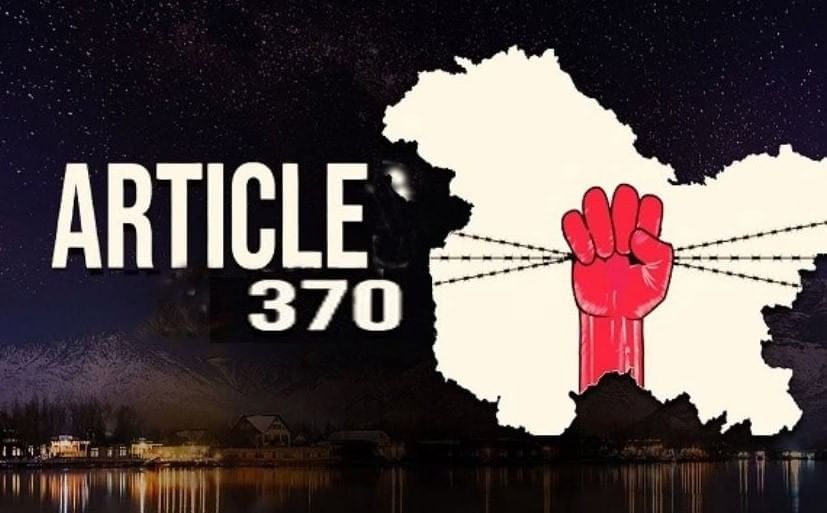
Why in News?
The abrogation of Article 370 on August 5, 2019, and the transformation of Jammu & Kashmir into a Union Territory (UT) were aimed at promoting national integration, development, and peace. Six years later, a critical review shows mixed outcomes in politics, security, economy, and tourism, alongside ongoing structural and governance challenges.
Key Takeaways
- Political developments show a mix of democratic revival and limited authority.
- Security improvements overshadowed by significant incidents like the Pahalgam attack.
- Economic growth seen through increased investments and revenue, but challenges persist.
- Tourism thrived despite security concerns, highlighting the region's fragility.
Additional Details
- Political Developments: The National Conference (NC) is leading a new elected government, indicating a return to democratic representation. However, key powers remain with the Lieutenant Governor, limiting the Chief Minister's authority. The government has pushed for statehood and reaffirmed special status, stirring tensions with the Centre.
- Security Improvements: There has been a significant decline in terrorism, with only 28 terrorists killed in 2025 compared to 67 in 2024. However, the Pahalgam attack, which resulted in 26 civilian deaths, exposed security gaps in tourism zones.
- Economic Growth: The region has attracted substantial industrial investments, with proposals totaling Rs 1.63 lakh crore. Tax revenues have increased significantly, with the state's GDP doubling from Rs 1.17 lakh crore in 2015-16 to Rs 2.63 lakh crore in 2024-25. However, core sectors like agriculture and industry underperform.
- Tourism Development: The record of 2.11 crore tourists in 2023 highlights a booming tourism sector, contributing 7% to GDP. Nevertheless, security incidents led to the temporary closure of several tourist sites.
In conclusion, six years after the abrogation of Article 370, Jammu & Kashmir presents a complex landscape with notable gains in security and investment; however, challenges in political autonomy, fiscal sustainability, and private sector confidence remain. The recent Pahalgam attack underscores the need for a balance between security and development to achieve lasting integration and prosperity.
On Jammu and Kashmir and the Lieutenant-Governor’s Assembly member nominations
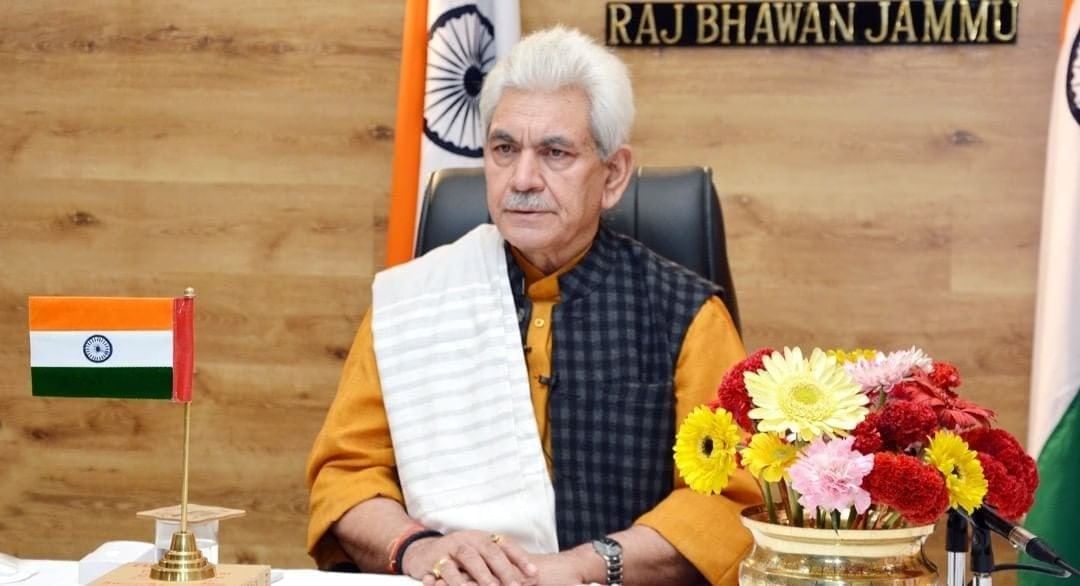
Why is it News?
- The Union Ministry of Home Affairs (MHA) has informed the Jammu and Kashmir (J&K) High Court that the Lieutenant-Governor (L-G) has the authority to nominate five Assembly members without the assistance and advice of the elected government.
- This statement has triggered a constitutional discussion about democratic accountability in the politically sensitive Union Territory of J&K.
- The nominations by the L-G could significantly impact the balance of power in the 119-member Assembly, potentially overturning the electoral decisions made by the people.
- The High Court is currently reviewing whether this practice undermines the fundamental principles of the Constitution.
Core Issues before the J&K High Court
- Constitutional Question: The High Court is examining if the 2023 amendments to the J&K Reorganisation Act, which permit the L-G to nominate five members to the Assembly, violate the basic structure of the Constitution.
- Potential Impact: The court is considering how these nominated members could potentially change the dynamics of the Assembly, transforming a minority government into a majority one, and vice versa, which could significantly affect governance stability.
- Judicial Scope: The issue at hand goes beyond mere statutory interpretation and delves into the essence of democratic principles and governance.
Provisions of the 2023 Amendments
- Sections 15A & 15B of the Jammu and Kashmir Reorganisation Act, 2019: These sections outline the criteria for nominating members to the Assembly, including provisions for ensuring representation of specific groups.
- Total Seats: The amendments create a provision for five nominated members within the 119-member Assembly, aiming to enhance representation and address specific needs.
- Voting Rights: The nominated members will have full voting rights, allowing them to participate actively in the Assembly’s decision-making processes.
Centre’s Justification for Nominations
- The MHA argues that the power to make these nominations lies outside the jurisdiction of the elected government, referencing the K. Lakshminarayanan vs Union of India case concerning Puducherry.
- The Centre’s legal standpoint involves technical aspects like the concept of “sanctioned strength,” which includes both elected and nominated members, and references Section 12 of the 1963 Union Territories Act regarding voting procedures.
- The MHA’s approach appears to concentrate on legal details rather than the broader constitutional and democratic implications of such nominations.
Concerns Regarding Democratic Implications
- Risk of Mandate Distortion: There is a concern that in a closely contested Assembly, the nominated members could play a decisive role in determining the stability and direction of the government, potentially undermining the original electoral mandate.
- Precedent in Puducherry: The experience in Puducherry, where nominated members and defectors contributed to the downfall of the Congress-led government in 2021, raises alarms about similar scenarios in J&K.
- Union Territory Context: The context of J&K’s transition from a State to a Union Territory in 2019, which occurred without adequate consultation with elected representatives, amplifies the need for careful consideration of accountability and democratic norms in the region.
Supreme Court’s Jurisprudence on L-G’s Powers
- In cases like the Delhi Services Cases (Government of NCT of Delhi vs. Union of India in 2018 and 2023), the Supreme Court has clarified that the L-G should act on the advice of the elected government, with discretion being an exception rather than the rule.
- The MHA’s position that the power to make nominations lies outside the elected government’s purview contradicts this established jurisprudence, raising questions about the consistency and rationale of such claims.
Conclusion
- The issue of nominations in J&K underscores the delicate balance between administrative authority and democratic legitimacy.
- In regions like J&K, where political sensitivities are high, bypassing elected governments in critical decisions that can alter Assembly majorities poses risks to public trust and the foundational principles of representative governance as enshrined in the Constitution.
Value Addition
(a) Basic Structure Doctrine:
- Evolved through cases like Kesavananda Bharati vs State of Kerala (1973), which prevents Parliament from amending the Constitution in ways that harm its essential features.
- Recognises representative democracy and federalism as part of this basic structure.
(b) Lakshminarayanan Case (2019):
- In K. Lakshminarayanan vs Union of India, the Supreme Court upheld the Centre’s power to nominate MLAs in Puducherry without consulting the elected government.
- This precedent is central to the J&K dispute, as similar powers are being exercised by the L-G.
(c) Delhi vs L-G Jurisprudence:
- Through cases like Government of NCT of Delhi vs Union of India, the Supreme Court emphasised that the L-G should act on the elected Council of Ministers’ advice, except in specific matters of discretion.
- This principle reinforces that administrative authority should not override electoral mandates, making MHA’s argument in J&K seem contrary to evolving constitutional norms.
(d) Union Territory Governance Model:
- Union Territories with legislatures, like Delhi, Puducherry, and J&K, operate under a hybrid governance system where the Centre retains significant control while local governments have legislative powers.
- In politically sensitive UTs like J&K, tensions between central authority and local democratic accountability are amplified, especially when powers like nominations can shift legislative majorities.
Revision of Creamy Layer Income Limit: Need of the Hour
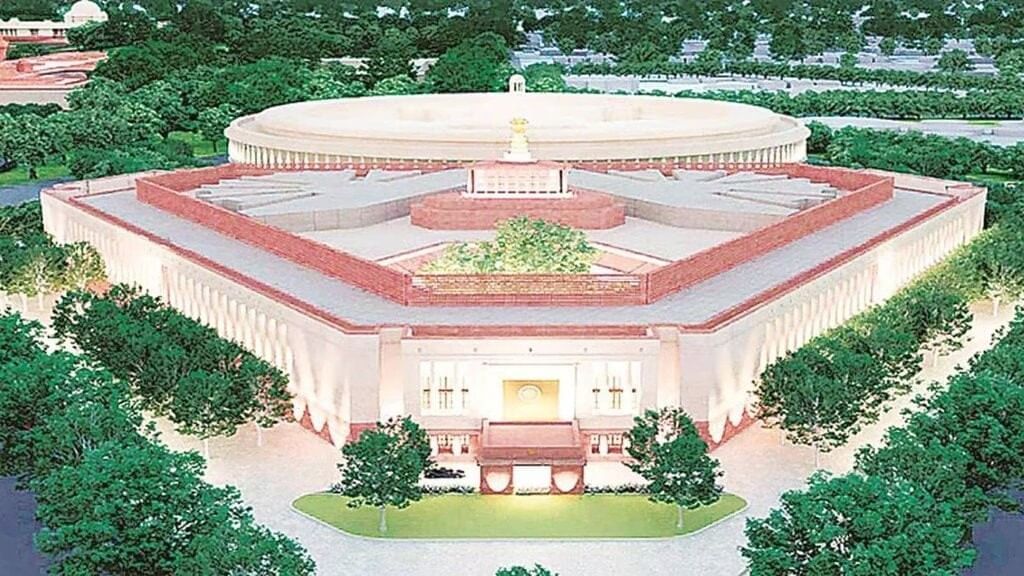
Why in News?
The Parliamentary Committee on Welfare of Other Backward Classes (OBCs) has emphasized the necessity to revise the "creamy layer" income ceiling for OBC reservation benefits. They describe this revision as the "need of the hour," highlighting that inflation and rising income levels have rendered the current limit of ₹8 lakh per annum (set in 2017) insufficient. The Ministry of Social Justice and Empowerment (MoSJE) has indicated that there is no proposal currently under consideration for a revision.
Key Takeaways
- The creamy layer concept was established following the Indra Sawhney v. Union of India (1992) judgment.
- The current income limit has not been revised since 2017 despite changing economic conditions.
- Periodic revisions are mandated every three years according to Department of Personnel and Training (DoPT) norms.
Understanding the “Creamy Layer” Concept
- Initial Setting:The creamy layer income ceiling was first set at ₹1 lakh in 1993 and has been revised multiple times:
- ₹2.5 lakh in 2004
- ₹4.5 lakh in 2008
- ₹6 lakh in 2013
- ₹6.5 lakh in 2014
- ₹8 lakh in 2017 (last revision)
- Exclusion Criteria: Households exceeding the annual income limit are excluded from receiving OBC reservation benefits.
OBC Reservations in India: Historical Background
- Constitutional Foundation:
- Article 15(4): Allows special provisions for the advancement of socially and educationally backward classes (SEBCs), Scheduled Castes (SCs), and Scheduled Tribes (STs).
- Article 16(4): Empowers the State to provide reservation in appointments for any backward class inadequately represented in State services.
- Article 340: Empowers the President to appoint a commission to investigate conditions of backward classes and recommend measures.
Significance of Revising the Creamy Layer Limit
- Ensures benefits reach those who truly need them, adapting to economic changes.
- Supports more OBC families in accessing education, jobs, and government schemes, thereby reducing inequality.
- Compliance with policy guidelines as DoPT’s 1993 order mandates periodic revisions.
Challenges
- Balancing Reservation Benefits: Need to avoid over-expansion that may dilute benefits for the most marginalized.
- Economic vs. Social Backwardness: Income is just one indicator; social deprivation is more complex to quantify.
- Political Consensus: Changes in reservation policy are politically sensitive and require broad agreement.
Committee’s Concerns on the Current ₹8 Lakh Threshold
- Erosion by Inflation: Rising income levels have diminished the effectiveness of the current threshold.
- Exclusion of Needy Segments: Many OBC families needing reservation benefits are above ₹8 lakh but still face economic disadvantages.
- Socio-Economic Goals: Wider coverage will help uplift the social and educational status of more OBC families.
Way Forward
- Periodic & Transparent Revision: Implement automatic inflation-indexed adjustments.
- Comprehensive Backwardness Index: Include education, occupation, and rural/urban disparities, alongside income.
- Targeted Scholarships: Expand pre-matric support for lower classes to enhance educational pipelines.
- Better Data: Conduct regular socio-economic surveys for evidence-based policy making.
The creamy layer provision is crucial for ensuring that reservation benefits reach the truly disadvantaged among OBCs. With current inflation and rising income levels, the existing ₹8 lakh ceiling may no longer be effective. The Parliamentary Committee’s recommendation for revision aligns with constitutional principles of equality and social justice, though careful consideration is needed to balance inclusivity, efficiency, and fairness.
Value Addition
- Key Developments:
- First Backward Classes Commission (Kaka Kalelkar Commission, 1953) – recommended caste-based reservations but was not implemented due to lack of quantifiable data.
- Second Backward Classes Commission (Mandal Commission, 1979) – recommended 27% reservation for OBCs in government jobs and educational institutions, implemented in 1990.
- Indra Sawhney Case (1992) – capped total reservation at 50% and introduced the creamy layer exclusion for OBCs.
- Recent Trends:
- 102nd Constitutional Amendment (2018) – granted constitutional status to the National Commission for Backward Classes (NCBC).
- 105th Constitutional Amendment (2021) – restored the power of states to identify OBCs for their own purposes.
Mains Practice Questions:
- “Reservation for backward classes should be based on social and educational backwardness rather than economic criteria alone.” Discuss.
- The creamy layer in OBC reservation is a safeguard for ensuring equity within equity.” Comment.
Supreme Court’s Social Media Regulation Order: Free Speech and Accountability
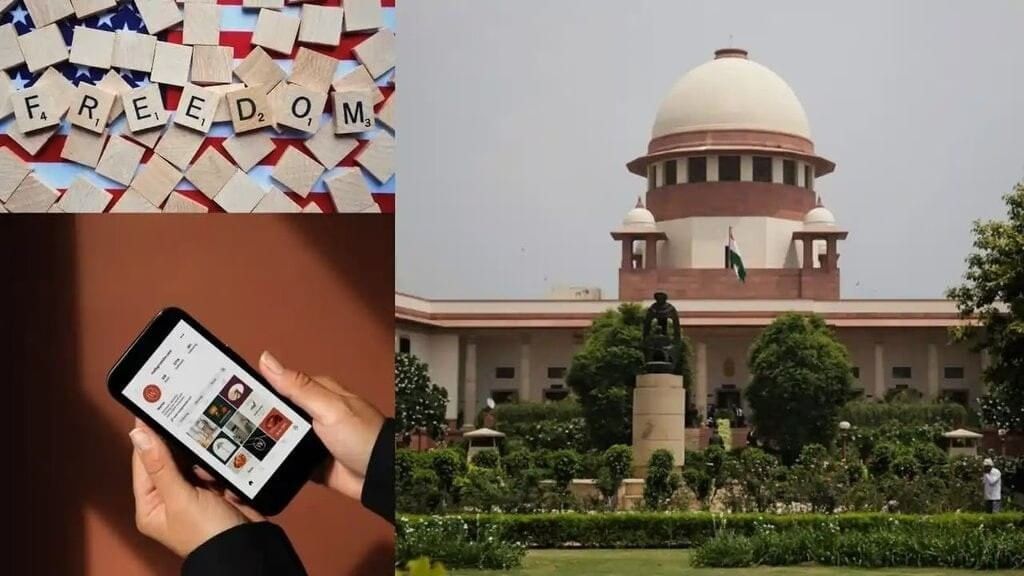
Why in News?
The Supreme Court of India has mandated the Centre to formulate guidelines for regulating social media, emphasizing that the right to free speech should not be exploited for commercial purposes at the expense of public dignity.
Key Takeaways
- The Supreme Court directed the Union government to draft comprehensive social media regulations.
- The court's decision comes amid rising concerns about the misuse of free speech by digital creators for profit.
- The ruling balances constitutional rights with accountability in the digital landscape.
Additional Details
- Supreme Court's Directive: A two-judge bench highlighted that while free speech is a constitutional right under Article 19(1)(a), it should not be used for commercial gain in ways that offend vulnerable groups.
- The case arose from a petition by a non-profit advocating for individuals with Spinal Muscular Atrophy (SMA), who claimed that derogatory remarks from comedians violated their dignity.
- The court ordered the Centre to consult with the National Broadcasters and Digital Association (NBDA) while drafting regulations and instructed the comedians involved to issue public apologies on their social media.
- Constitutional Framework on Free Speech:Article 19(2) of the Constitution allows restrictions on free speech under specific grounds, including:
- Sovereignty and integrity of India
- Security of the State
- Friendly relations with foreign states
- Public order
- Decency and morality
- Contempt of court
- Defamation
- Incitement to offences
- The Supreme Court has consistently maintained that restrictions must not exceed these grounds. In Shreya Singhal v. Union of India (2015), the court invalidated Section 66A of the IT Act, affirming that even speech that "offends, shocks, or disturbs" remains protected.
- The Debate on Commercial Speech:The regulation of commercial speech has evolved in India:
- In Hamdard Dawakhana v. Union of India (1959), the court ruled that advertisements linked to trade do not qualify as free speech.
- Conversely, Tata Press v. MTNL (1995) acknowledged commercial speech as constitutionally protected, as it serves public interest by providing information.
- Subsequent cases like A. Suresh v. State of Tamil Nadu (1997) emphasized the need to balance commercial expression with societal interests.
- Existing Legal Framework for Digital Media: Social media platforms in India are already regulated under the IT (Intermediary Guidelines and Digital Media Ethics Code) Rules, 2021, which mandate the restriction of obscene and harmful content. Influencers face legal consequences if their speech constitutes defamation or incitement.
- Experts warn that new guidelines must be crafted carefully to avoid infringing on free speech, given the Supreme Court's robust history of protecting it.
The court's intervention raises significant questions about the future of free speech in the digital age, especially with around 491 million Indians active on social media. While the aim is to limit abusive or derogatory content presented as entertainment or marketing, it also places an obligation on the government to ensure that regulation does not turn into a form of censorship. Legal scholars suggest that this ruling offers a chance to consolidate accountability principles without undermining constitutional protections.
Language and Division of States
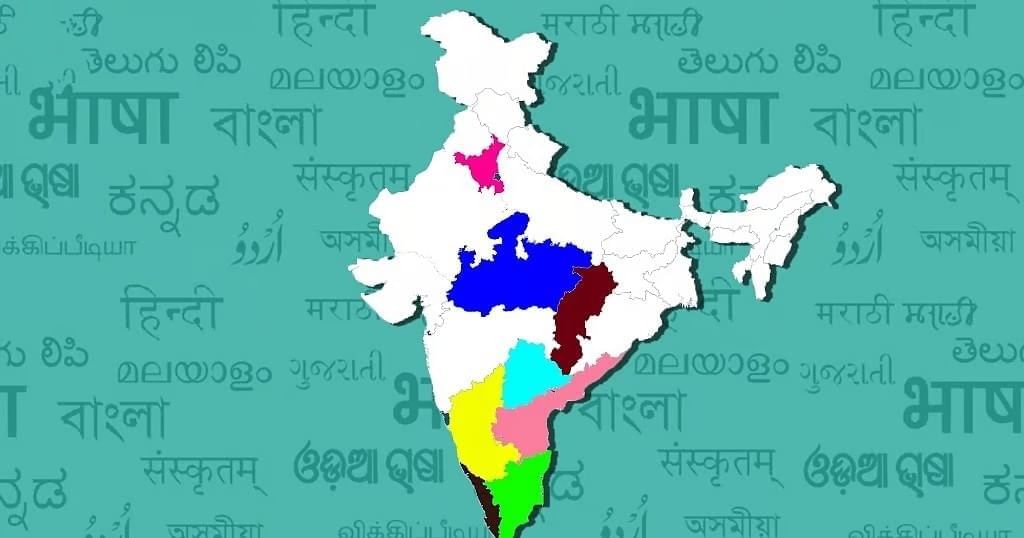
Why in News?
Tamil Nadu Governor R N Ravi recently ignited a debate by asserting that the linguistic reorganisation of Indian states has rendered significant segments of the population as “second-class citizens.” His remarks at an event in Gandhinagar suggested that the changes initiated shortly after Independence have compromised national unity.
Key Takeaways
- The linguistic reorganisation began within a decade of India's Independence and has been a subject of contention regarding national unity.
- The formation of states based on language has been seen as a crucial aspect of India's political geography.
Additional Details
- Pre-Reorganisation Political Geography: At the time of Independence in 1947, India inherited a complex administrative structure shaped by British colonial governance, which included direct rule in provinces and indirect control over princely states.
- Four-Part Division under the 1950 Constitution:India was classified into four categories of states:
- Part A States: Included nine former British provinces with elected legislatures, such as Bombay and Madras.
- Part B States: Comprised eight former princely states governed by elected legislatures and a rajpramukh, including Hyderabad and Jammu & Kashmir.
- Part C States: Ten territories directly controlled by the President, examples include Delhi and Himachal Pradesh.
- Part D State: The Andaman and Nicobar Islands were administered by a Lieutenant Governor.
- JVP Committee Warning: In 1949, the JVP Committee cautioned that reorganising states based on language could disrupt national unity.
- Potti Sriramulu's Martyrdom: His death in December 1952 after a hunger strike for a separate Telugu state triggered significant protests, leading to the formation of Andhra on October 1, 1953.
- States Reorganisation Commission (SRC): Established in December 1953 to assess the demand for linguistic statehood, the SRC's recommendations ultimately resulted in the States Reorganisation Act of 1956.
- 1956 Reorganisation: This act redrew India’s political map into 14 states and six Union Territories primarily based on linguistic lines, marking a significant evolution in India's federal structure.
- Balanced Approach: The SRC emphasized that while language and culture are vital, national unity and administrative viability are also crucial for state reorganisation.
- Pluralism vs. Unilingualism: Nehru advocated for cooperation among linguistic groups, arguing against the idea of unilingualism as a foundation for India’s federalism.
- International Observations: Many Western observers anticipated that linguistic divisions would lead to fragmentation; however, India's experience demonstrated that linguistic states fostered integration and efficiency.
In conclusion, India's approach to linguistic reorganisation has not only preserved national unity but has also been seen as an administrative success, helping to maintain coherence in a diverse society. This stands in contrast to other nations, where similar linguistic issues have led to conflict.
Nudges From the Court, Silence from the Commission
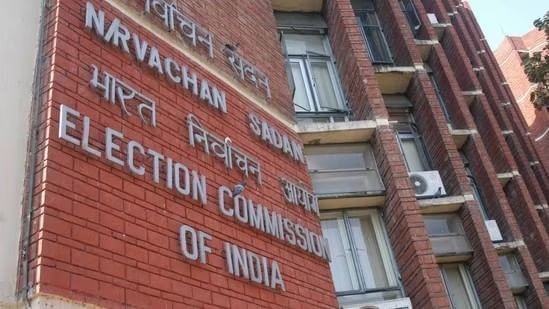
Why in News?
The Supreme Court of India has raised urgent questions regarding the Special Intensive Revision (SIR) of electoral rolls in Bihar, which was initiated by the Election Commission of India (ECI). While the ECI describes this as a routine update, the implications suggest a troubling shift that could undermine India's democratic electoral framework.
Key Takeaways
- The SIR process requires voters to provide documentation to prove citizenship, contradicting the traditional presumption of inclusion in the electoral system.
- Millions of marginalized individuals may be disenfranchised due to stringent documentation requirements.
- This policy represents a significant departure from India's foundational vision of universal adult suffrage.
Additional Details
- Disenfranchisement Risks: The SIR demands voters present rare documents like birth certificates and passports within a strict one-month timeframe, threatening to disenfranchise over 6.5 million people in Bihar alone.
- Historical Context: This situation resembles the Jim Crow era in the United States, where similar bureaucratic barriers were used to suppress marginalized populations.
- The shift from presumed inclusion to presumptive exclusion alters the fundamental nature of belonging in a diverse society like India.
- Judicial Response: The Supreme Court's scrutiny of the ECI's actions is a positive development, but more assertive intervention is necessary to uphold the Constitution's core values.
This situation transcends mere administrative issues; it is fundamentally about power dynamics in democracy. If disenfranchisement continues unchecked, India risks becoming a democracy in name only. Citizens must reclaim their right to vote as an inherent birthright, rather than a privilege conditional on bureaucratic compliance.
Grant of Bail in India
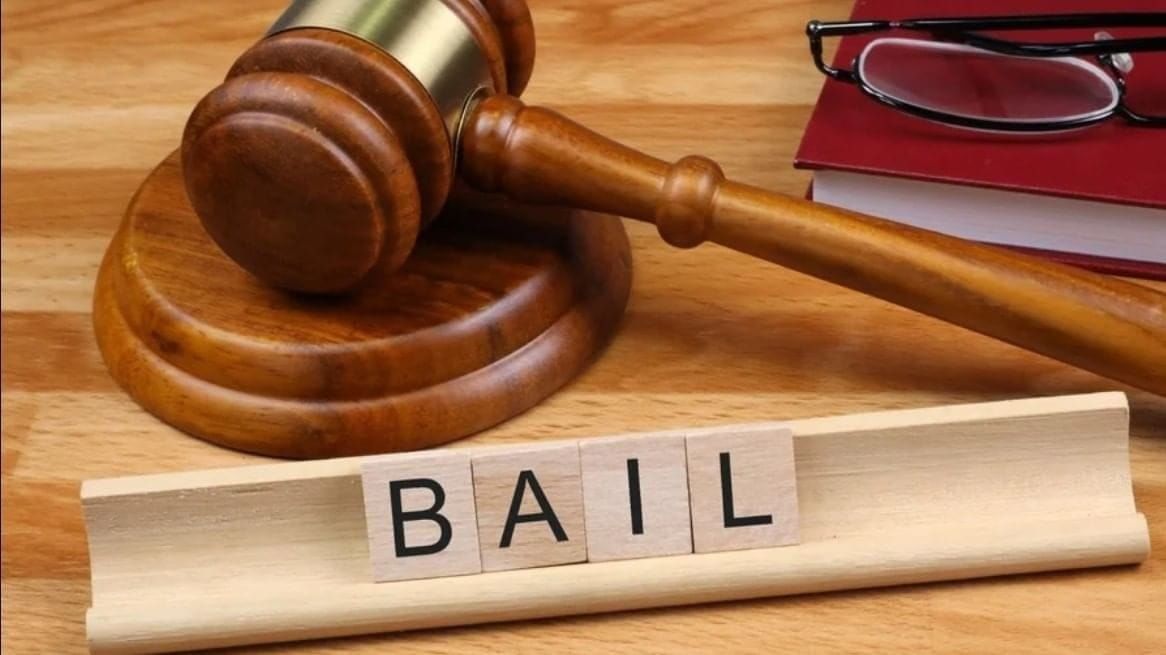
Why in News?
The recent decision by the US President to halt federal funding for cashless bail has sparked discussions regarding the fairness of the system, particularly concerning its impact on economically disadvantaged individuals.
Key Takeaways
- The cashless bail system eliminates the need for upfront cash, relying instead on non-financial conditions like monitoring and assurance of court appearance.
- The traditional cash bail system disproportionately affects the poor, often leading to the detention of individuals accused of minor offenses due to their inability to pay.
Additional Details
- Bail Provisions in India: Under the Bharatiya Nagarik Suraksha Sanhita (BNSS), 2023, bail serves as a mechanism to release an accused from custody with assurances against absconding or tampering with evidence.
- Types of Bail under BNSS:
- Regular Bail: For bailable offenses, bail is a right (Sec. 478); for non-bailable offenses, it is at the court’s discretion (Secs. 480, 483).
- Anticipatory Bail (Sec. 482): Granted before arrest in non-bailable offenses, with conditions imposed to ensure no interference with investigations.
- Interim Bail: Temporary release while waiting for the decision on regular or anticipatory bail applications.
- Statutory/Default Bail (Sec. 187): An accused has the right to bail if the chargesheet is not filed within the stipulated time.
- Bail Mechanisms in Practice:
- Bond: The accused signs a bond and deposits cash as a guarantee, refundable after trial unless terms are violated.
- Bail Bond: Surety provided by a friend, family member, or employer, requiring verification of their financial stability and residence.
- Personal Recognisance (PR) Bond: The accused is released without an immediate cash deposit but must arrange the money within a specified time.
- Challenges in India’s Bail System:
- Many undertrials remain in jail despite being eligible for bail due to their inability to furnish surety or small amounts (e.g., ₹5,000 or less).
- Prison overcrowding is a significant issue, with Maharashtra prisons reporting over 12,000 excess prisoners as of July 2025.
- Judicial Concerns: The 268th Law Commission Report (2017) deemed the monetary bail system discriminatory and unconstitutional, violating the right to a fair trial.
- Supreme Court Guidelines (2023): If an accused remains in jail for more than one week despite bail, the jail superintendent must inform the District Legal Services Authority (DLSA), which can facilitate their release.
- Reform Under BNSS (2023): Jail authorities are mandated to apply for bail for undertrial prisoners who have served a specified portion of their maximum sentence, with exceptions for life imprisonment or death penalty cases.
In summary, the bail system in India is undergoing significant scrutiny and reform as it seeks to balance the rights of the accused with the integrity of the judicial process. The challenges faced by undertrials highlight the urgent need for legal and systemic improvements.
Legal Insanity and Its Implications in Judicial Proceedings
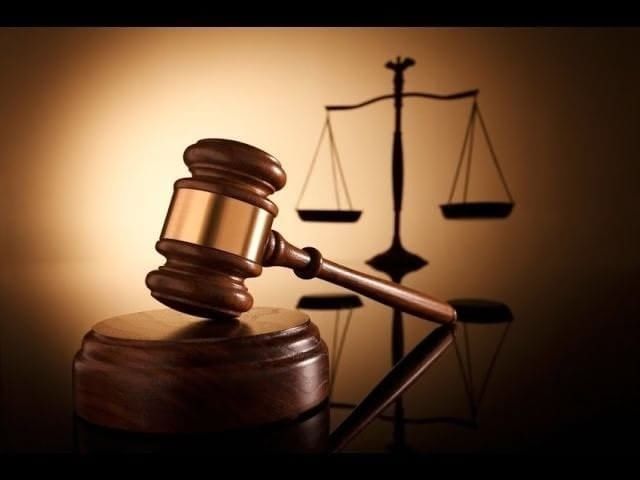
Why in News?
The Chhattisgarh High Court recently acquitted a man of double murder on the grounds of legal insanity, underscoring the critical role of mental state evaluations in criminal trials.
Key Takeaways
- Legal insanity is a defense in criminal law based on mental incapacity.
- The accused must prove that they were unable to understand the nature of their actions due to severe mental illness.
- There are various types of legal insanity, including emotional and temporary insanity.
Additional Details
- Legal Insanity: This term refers to a mental state severe enough to negate legal responsibility for a crime. It assumes that the defendant could not appreciate the nature of their actions or differentiate right from wrong at the time of the offense.
- The insanity defense is a legal concept and not merely a clinical one; proving insanity requires more than just having a mental disorder.
- To successfully claim legal insanity, the accused must provide evidence, often through psychiatric evaluations, showing they were not in control of their reasoning faculties during the incident.
- Different forms of legal insanity include emotional insanity, characterized by intense emotional disturbance, and temporary insanity, which exists solely at the time of the crime.
- The Supreme Court case of Surendra Mishra vs. State of Jharkhand (AIR 2011 SC 627) established that not all individuals with mental illnesses are exempt from criminal liability; the burden of proof lies with the accused.
In conclusion, the concept of legal insanity plays a crucial role in ensuring that individuals who are genuinely unable to comprehend their actions due to mental health issues are treated fairly within the legal system. This highlights the importance of mental health evaluations in understanding criminal responsibility.
Nuclear Laws and the Role of Opposition
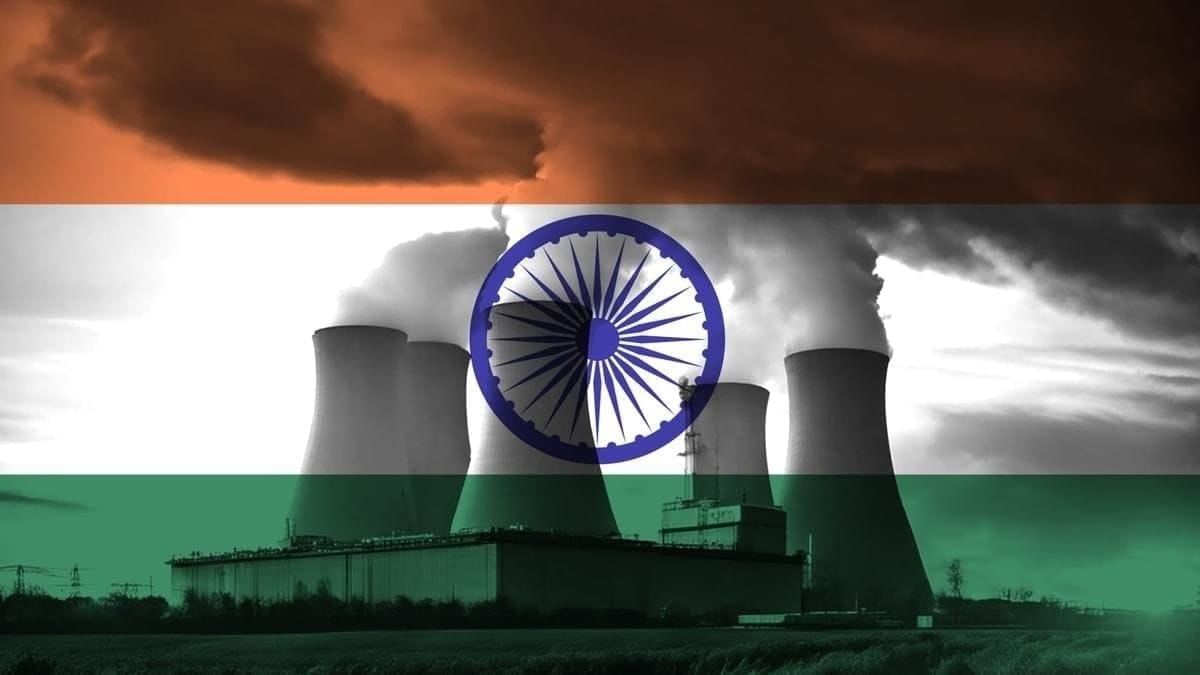
Why in News?
India's energy security and climate change commitments are facing significant challenges as the government is set to revisit critical legislative issues, particularly the Civil Liability for Nuclear Damages Act (CLNDA), 2010, and the Atomic Energy Act (AEA), 1962. Proposed amendments aim to redefine liability frameworks and encourage private participation in nuclear energy, thereby testing the unity of the Opposition and shaping India's nuclear future.
Key Takeaways
- The CLNDA was enacted in 2010 to establish a liability framework for nuclear accidents.
- Amendments may dilute accountability and prioritize foreign corporate interests, according to Opposition parties.
- India's nuclear power contributes only about 3% to the total energy mix, necessitating structural reforms for growth.
Additional Details
- Historical Context: The debate on nuclear liability in India dates back over fifteen years, with the CLNDA enacted after major disasters like the Bhopal gas leak and Fukushima disaster, highlighting the need for corporate accountability.
- Political Dynamics: The BJP-led NDA government seeks to amend existing laws to attract investment, while the Congress opposes these changes, arguing they compromise safety and accountability.
- Energy Aspirations: The government aims to increase nuclear capacity from 8.8 GW to 22.48 GW by 2031-32 and 100 GW by 2047, contingent on resolving liability issues and adopting new technologies.
The ongoing discourse around nuclear laws underscores the delicate balance between ensuring accountability and fostering growth in India’s energy sector. A pragmatic liability framework is essential for attracting investment and expanding nuclear capacity while meeting climate goals. Ultimately, bipartisan cooperation and a constructive debate on these matters will be crucial for aligning energy security with public safety and national interests.
Jan Vishwas Bill 2.0
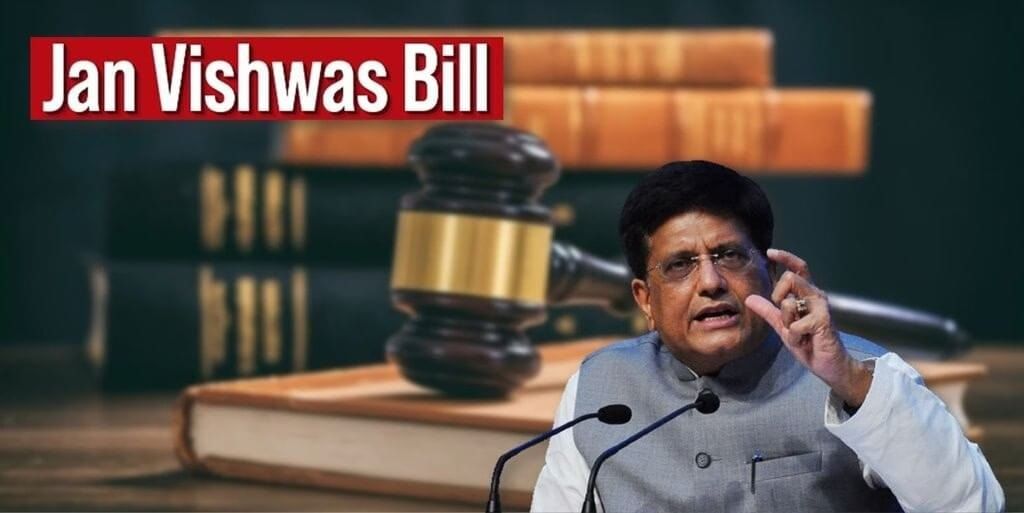
Why in News?
The Jan Vishwas (Amendment of Provisions) Bill, 2025 has been introduced in the Lok Sabha as a continuation of the government's efforts to decriminalise and rationalise laws. This is the second iteration of the Jan Vishwas Bill, following the first one in 2023, which aimed to decriminalise 183 provisions across 42 Acts.
Key Takeaways
- Introduced in Lok Sabha in August 2025 as the second Jan Vishwas reform.
- Seeks to amend 16 Central Acts spanning 10 ministries/departments.
- Builds upon the Jan Vishwas Act of 2023, which decriminalised 183 provisions.
- Aims to enhance trust-based governance and improve ease of living and doing business.
- Currently under review by a Lok Sabha Select Committee.
Additional Details
- Scope: The Bill proposes amendments to 355 provisions, with 288 decriminalised due to technical and procedural defaults and 67 rationalised for better ease of living.
- Acts covered: Includes significant legislation such as the RBI Act (1934), Drugs & Cosmetics Act (1940), Motor Vehicles Act (1988), Electricity Act (2003), and others.
- First-time Offences: Introduces a "warning" and "improvement notice" for 76 offences, such as minor violations of the Motor Vehicles Act.
- Decriminalisation: Removes imprisonment clauses for minor defaults, replacing them with fines or warnings. For instance, in the Electricity Act, imprisonment is substituted with fines ranging from ₹10,000 to ₹10 lakh.
- Penalty Rationalisation: Establishes an automatic 10% increase in penalties every three years for repeat offences, ensuring deterrence without overburdening the judiciary.
The introduction of this Bill addresses the over-criminalisation of Indian laws, where 882 central laws contain criminal provisions for over 7,305 offences, many of which are trivial or outdated. The Bill aims to reduce fear among entrepreneurs due to excessive legal repercussions, thereby promoting business growth and aligning with the governance reform agenda of the current administration.
Key Features of Online Gaming Act 2025

Why in the News?
The Indian Parliament has passed the Online Gaming Act 2025, which aims to regulate the growing digital gaming industry by banning Real Money Games (RMGs) while promoting e-sports and social gaming through a structured framework. This legislation responds to rising concerns regarding addiction, fraud, and economic losses associated with RMGs.
Key Takeaways
- The Act categorizes online games into e-sports, social gaming, and RMGs.
- Real Money Games are banned entirely, including related advertisements and endorsements.
- Stringent penalties are imposed for violations, focusing on operators rather than players.
- The Act aims to promote safe online gaming ecosystems and support e-sports through government funding.
Additional Details
- Classification of Online Games:The Act distinguishes between three categories:
- E-sports: Recognized competitive video games with prize pools, such as Call of Duty and Grand Theft Auto.
- Social Gaming: Games played for recreational or educational purposes, typically without monetary stakes.
- Real Money Games: Games involving money, credits, or tokens, like Poker and Fantasy Cricket, are banned.
- Penalties and Enforcement:
- Offering RMGs can lead to up to three years of imprisonment or a fine of Rs. 1 crore.
- Unlawful advertisements may incur two years of imprisonment or a fine of Rs. 50 lakh.
- Government Oversight: CERT-IN is authorized to disable non-compliant apps, and collaborations with Interpol are planned to address offshore operators.
- Rationale for Legislation: The Act is a proactive response to issues such as addiction, financial fraud, tax evasion, and potential links to terrorism funding.
- Legal Challenges: The Act faces scrutiny regarding the classification of games and jurisdictional overlaps with state laws.
The Online Gaming Act 2025 represents a significant regulatory shift in India's gaming landscape, aiming to balance innovation with public safety. By supporting e-sports and social gaming while cracking down on RMGs, the government seeks to create a safer gaming environment.
Explained - India’s Online Gaming Bill 2025
Why in News?
The Lok Sabha has recently approved the Online Gaming Bill 2025, which aims to prohibit harmful real money gaming while promoting e-sports and social gaming under a new regulatory framework.
Key Takeaways
- The Bill introduces a complete ban on real money gaming due to its associated social, financial, and psychological harms.
- It seeks to protect vulnerable groups, encourage responsible gaming, and foster India's digital innovation ecosystem.
Additional Details
- Key Provisions:The Bill is divided into three main segments:
- E-Sports: Recognized as a creative industry with significant growth potential, the Bill supports its development as a mainstream sector.
- Online Social Games: Promoted as safe entertainment options that do not involve financial risks or addictive gambling mechanisms.
- Online Money Games: These are completely banned, covering activities like fantasy sports, poker, and rummy.
- Penalties for Violations: First-time offenders can face up to three years imprisonment and fines of up to Rs. 1 crore, with harsher penalties for repeat offenses.
- Establishment of an Online Gaming Authority: This statutory body will oversee the sector, ensuring safe practices and regulating gaming platforms.
Rationale Behind the Legislation
The government highlighted the need for regulatory action due to alarming trends:
- 32 suicides linked to online money gaming addiction in the past 31 months.
- Financial distress among families due to compulsive gambling.
- Concerns over money laundering and terror financing through real money gaming.
- Psychological issues stemming from exploitative gaming algorithms.
The Lok Sabha Speaker described the Bill as legislation of "national interest," aimed at preventing financial and emotional crises in families.
Industry Response and Potential Challenges
The Bill has raised concerns within India's multi-billion-dollar real money gaming sector, which has previously advocated for regulation rather than an outright ban. Legal experts note that the Bill is robust enough to survive judicial scrutiny, emphasizing its focus on public interest and national security.
Significance for India’s Digital Future
- For Youth: The Bill aims to protect young players from addiction and financial ruin.
- For Industry: It provides clarity and legitimacy to e-sports and social gaming startups.
- For Society: It addresses concerns related to fraud, money laundering, and mental health.
- For Governance: A national-level framework is established to regulate the fragmented gaming sector effectively.
By supporting e-sports, the Bill aligns with India’s goal of becoming a global leader in digital entertainment, especially with upcoming events like the proposed 2036 Olympics.
Towards Drug Free India
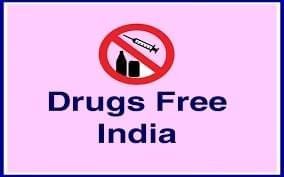
Why in News?
India is facing a growing crisis of drug abuse, which has prompted the government to take action. The Nasha Mukt Bharat Abhiyaan was launched to combat this issue and has now been in effect for five years.
Nasha Mukt Bharat Abhiyaan
- About: The Nasha Mukt Bharat Abhiyaan was initiated on 15th August 2020 by the Ministry of Social Justice & Empowerment.
- Objectives: The program aims to raise awareness about substance use, particularly in educational institutions, universities, and schools. It also focuses on identifying dependent populations and strengthening counseling and treatment facilities.
- Expansion: Initially targeted 272 vulnerable districts, the program has now been extended to all districts in India.
3-Pronged Strategy
The Nasha Mukt Bharat Abhiyaan follows a three-pronged strategy that includes:
- Supply Control: Measures to control the supply of drugs.
- Demand Reduction: Efforts to reduce the demand for drugs.
- Medical Treatment: Providing medical treatment for addiction.
Key Achievements
- Mass Sensitisation: Reached over 18.10 crore people and 4.85 lakh institutions.
- Youth Mobilisation: Engaged 1.67 crore students through pledges and events.
- Digital & Tech Integration: Utilized social media, websites, apps, and geo-tagging.
- Volunteer Network: Established a network of over 20,000 Master Volunteers.
- Community Outreach: Conducted campaigns, monitoring, and awareness drives.
- Collaborations: Formed partnerships with spiritual and social organisations such as The Art of Living, Brahma Kumaris, Sant Nirankari Mission, Ram Chandra Mission (Daaji), ISKCON, and others.
Prevalence of Drug Abuse in India
- Drug Addiction: Approximately 10 crore people in India are affected by narcotics, with states like Uttar Pradesh, Maharashtra, and Punjab reporting the highest number of FIRs under the NDPS Act (2019–2021).
- Major Consumed Drugs: The National Survey on Extent and Pattern of Substance Use (2019) found that about 16 crore people (14.6%) aged 10–75 use alcohol, while 3.1 crore (2.8%) use cannabis.
2 Major Drug-Producing Regions in the World
- Golden Crescent: This region includes Afghanistan, Iran, and Pakistan and is a major opium hub. It affects Indian states such as Jammu & Kashmir, Punjab, Himachal Pradesh, Rajasthan, and Gujarat.
- Golden Triangle: Comprising Laos, Myanmar, and Thailand, this region is a key heroin-producing area, with Myanmar accounting for approximately 80% of the global supply. Trafficking routes from this region pass through India, making it a vulnerable transit and consumption zone.
What are the Key Challenges in Drug Control in India?
Mnemonic: DOPE
- D – Dark Net & New Substances: The rise of new psychoactive substances and illicit online trade using the darknet and cryptocurrency poses a significant challenge.
- O – Organizational & Infrastructure Gaps: There is a lack of trained personnel, forensic labs, rehabilitation centers, and specialized facilities necessary for effective drug control.
- P – Poor Awareness & Prevention: Inadequate education and weak community-level awareness, particularly in rural areas and among youth populations, hinder prevention efforts.
- E – Exclusion & Stigma in Addiction Treatment: Social stigma and high demand for rehabilitation services discourage individuals from seeking help, limiting the effectiveness of drug control measures.
What Measures Should be Taken to Eradicate Drug Abuse in India?
Mnemonic: SAFE
- S – Strengthen Law Enforcement: Enhance the implementation of the NDPS Act, 1985, and the Prevention of Illicit Traffic in Narcotic Drugs and Psychotropic Substances (PITNDPS) Act, 1988. This includes providing adequate resources, training, modern equipment, and improving intelligence and surveillance capabilities. Inter-agency coordination should also be strengthened.
- A – Awareness & Prevention: Expand treatment and rehabilitation facilities in accordance with the National Action Plan for Drug Demand Reduction (NAPDDR). This involves raising awareness about de-addiction and rehabilitation programs.
- F – Focus on Supply Reduction: Improve border control and use advanced technologies such as AI, Big Data, drones, and satellites. Establish online citizen reporting systems and support alternative livelihoods for illicit crop farmers, such as the Jharkhand poppy scheme. Intercepting supply chains is also crucial.
- E – Enhance International Cooperation: Collaborate with neighboring countries, the United Nations Office on Drugs and Crime (UNODC), and Interpol to track and prevent drug trafficking activities.
Recognising Organ Donation As a Lifeline
Why in News?
Organ transplantation represents a significant medical advancement and serves as the most effective remedy for terminal organ failure. However, India is grappling with a critical shortage of donor organs, resulting in over 500,000 preventable deaths each year. While the number of transplants has increased from 4,990 in 2013 to 18,378 in 2023, only 1,099 of these involved deceased donors. With an organ donation rate of just 0.8 per million people, significantly lower than Spain and the US (over 45 per million), the disparity between demand and supply remains alarming, leading to countless unnecessary fatalities. This article emphasizes the urgent need to tackle India’s organ shortage by dispelling myths, enhancing public trust, and implementing effective policies to elevate donation rates.
Key Takeaways
- India's organ donation rate is critically low, contributing to significant mortality.
- Myths about organ donation hinder potential donors and families.
- Public education is essential to improve organ donation rates.
Additional Details
- Dispelling Myths: Many families believe that organ retrieval disfigures the body, complicating funeral rites. In reality, organ removal is conducted respectfully, ensuring the donor's appearance is preserved for final ceremonies. Major religions view organ donation as a compassionate act aligned with spiritual values.
- Brain Death Certification: There is a false belief that doctors may rush to declare brain death to acquire organs. However, the process is governed by the Transplantation of Human Organs and Tissues Act, 1994, which mandates multiple expert confirmations and thorough documentation to ensure ethical practices.
- Addressing Age and Health Myths: Another misconception is that only young accident victims can be organ donors. Older individuals or those who die from natural causes can also donate various organs and tissues, including kidneys, liver segments, lungs, corneas, bones, skin, and heart valves.
- Community Engagement: Sustained awareness through media campaigns, community workshops, and educational curricula can foster a culture of donation. Healthcare professionals must also engage proactively with families to facilitate informed decisions.
In conclusion, organ donation transcends medical intervention; it embodies a profound humanitarian gesture and a legacy of compassion. On World Organ Donation Day (August 13), individuals are encouraged to register as donors and families to respect that choice. By dispelling myths, reforming policies, and fostering a culture of shared responsibility, India can aspire toward a future where no life is lost due to the lack of available organs.
Supreme Court Empowers Pollution Control Boards to Impose Environmental Compensation
Why in News?
The Supreme Court recently ruled that Pollution Control Boards (PCBs) have the authority to impose environmental compensation on polluting entities. This decision stems from their statutory mandate under the Water Act and Air Act, highlighting the need for proactive measures to prevent environmental harm.
Key Takeaways
- PCBs can demand restitutionary or compensatory damages through fixed monetary sums or bank guarantees.
- The Supreme Court overturned a previous ruling that restricted the imposition of penalties to the courts only.
- Compensation can only be levied when actual environmental damage has occurred or is imminent.
Additional Details
- Background of the Case: The Delhi Pollution Control Committee (DPCC) challenged a 2012 Delhi High Court ruling that canceled its notices demanding compensation from properties lacking valid environmental consents.
- PCBs' Authority: The Supreme Court affirmed that PCBs can impose and collect compensatory damages for the restoration of polluted air and water under Sections 33A (Water Act, 1974) and 31A (Air Act, 1981).
- The court emphasized that compensation must be framed under subordinate legislation ensuring adherence to the principles of natural justice.
- Judicial Precedents: The ruling referenced landmark cases such as Vellore Citizens Welfare Forum (1996) which established that environmental restitution is a constitutional obligation.
- Polluter Pays Principle: This principle applies when environmental thresholds are breached, and even when potential risks are identified.
The Supreme Court's ruling significantly expands the powers of PCBs, enabling them to act proactively to prevent environmental harm. The decision underscores the importance of environmental protection in light of the ongoing climate crisis, linking the duties of PCBs to the state's constitutional obligations. The court noted that merely issuing injunctions is insufficient; effective remedial measures are essential for ecosystem restoration.
State Health Regulatory Excellence Index
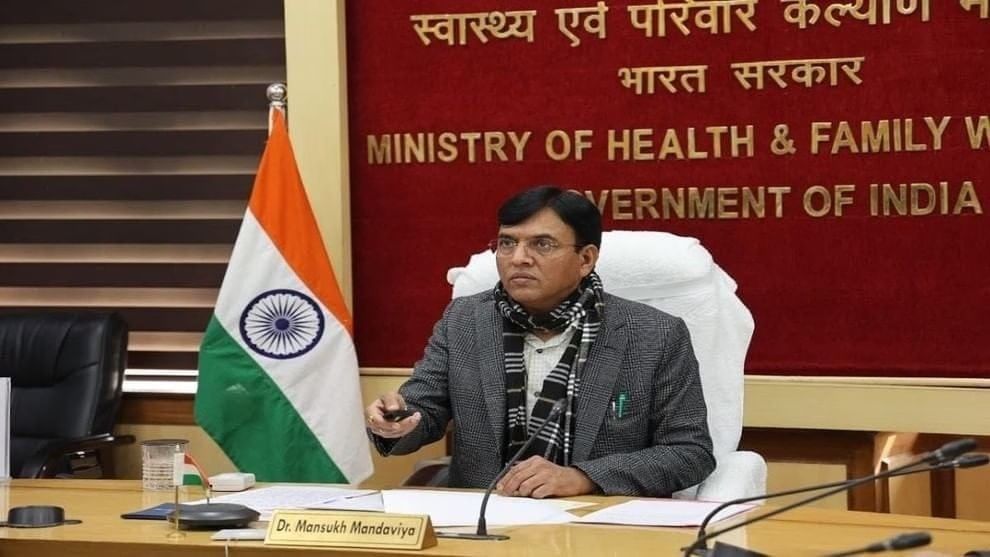
Why in News?
The Union Health Secretary has recently launched the State Health Regulatory Excellence Index (SHRESTH) through a virtual event. This initiative marks a significant step in enhancing the regulation of drugs across various states in India.
Key Takeaways
- SHRESTH is a pioneering national initiative aimed at benchmarking and improving state drug regulatory systems.
- The initiative is driven by the Central Drugs Standard Control Organization (CDSCO) to ensure consistent drug safety and quality across India.
- The index includes 27 metrics for Manufacturing States and 23 for Primarily Distribution States.
- Data submission and scoring will occur on a monthly basis, facilitating continuous assessment and improvement.
Additional Details
- Data Submission: States are required to submit their performance data based on predefined metrics to CDSCO by the 25th of each month, which will be evaluated and shared by the 1st of the following month.
- Significance: This index will help identify specific areas for improvement in human resources, infrastructure, and the digitization of processes, ultimately ensuring that drug safety is maintained for all citizens across different regions of India.
In conclusion, the SHRESTH initiative serves as a vital tool for states to assess their regulatory performance and work towards achieving higher standards in drug safety and efficacy.
National Disaster Management Authority (NDMA)
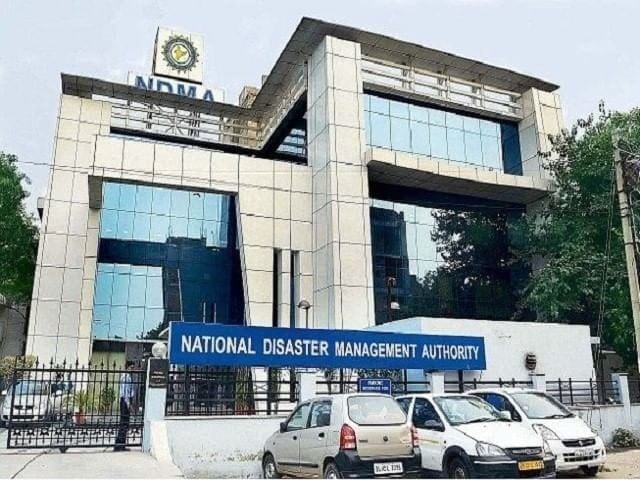
Why in News?
The Prime Minister of India has recently nominated two new members to the National Disaster Management Authority (NDMA) and has re-nominated three existing members to serve for an additional three years.
Key Takeaways
- The NDMA is the apex body for disaster management in India.
- It was established under the Disaster Management Act, 2005.
- The Prime Minister serves as the chairperson of the NDMA.
Additional Details
- Establishment: The NDMA was formed to oversee disaster management policies and is chaired by the Prime Minister of India.
- Objectives: The NDMA is tasked with creating national policies, plans, and guidelines for effective disaster management and ensuring their implementation across various ministries and agencies.
- Vision: The vision of NDMA is to build a safer and disaster-resilient India through proactive and sustainable strategies involving all stakeholders.
- Organisation Structure: The NDMA includes a Vice-Chairperson of Cabinet Minister rank and up to eight members of Minister of State rank. It operates through specialized divisions such as Policy & Plans, Mitigation, and Operations.
- Functions and Responsibilities: NDMA is responsible for laying down policies, approving disaster management plans, coordinating implementation, and providing recommendations for funding and capacity building.
In conclusion, the NDMA plays a crucial role in ensuring the country's preparedness and response to disasters, fostering resilience at both the national and local levels.
Detoxifying India’s Entrance Examination System
Why in News?
The entrance examination system in India has become a source of immense stress and competition, with approximately 70 lakh students competing annually for a limited number of undergraduate seats. The current model not only fuels a vast coaching industry but has also led to serious issues such as financial exploitation, mental health crises, and tragic student suicides. This situation prompts a need to reimagine admissions to prioritize fairness and student well-being.
Key Takeaways
- The entrance examination system promotes a culture of hyper-competition.
- Coaching centers impose financial burdens on families, charging exorbitant fees.
- There is a growing concern over the mental health impact on students.
- Current admissions often favor affluent students over equally capable rural ones.
Additional Details
- Coaching Crisis: The coaching industry has become a significant issue, with fees reaching ₹6-7 lakh for two years. Students as young as 14 are subjected to intense academic pressure, leading to stress and social isolation.
- Illusion of Meritocracy: The belief that success is solely based on individual merit ignores the advantages of privilege and resources, creating a skewed competitive landscape.
- Global Models: Countries like the Netherlands and China have implemented reforms such as weighted lotteries and reduced private tutoring to balance access and equity in education.
- Proposed Reforms: Simplifying admissions by relying on Class 12 board exams and implementing a lottery system could provide a fairer approach. Additionally, integrating reservation policies for underprivileged students could enhance social justice.
Ultimately, India faces a choice: continue the toxic rat race that harms its youth or adopt a fairer system that promotes equity and well-being. Transitioning to a lottery-based admissions process could alleviate pressure on students, making elite education accessible to all qualified candidates while fostering an environment conducive to learning and growth.
Unified District Information System for Education Plus (UDISE+)
Why in News?
The Ministry of Education has published a report on the Unified District Information System for Education Plus (UDISE+) for the academic year 2024-25, highlighting that the total number of teachers in India has surpassed the 1 crore mark as of 2024-25.
Key Takeaways
- UDISE+ is an educational management information system under the Ministry of Education.
- It serves as a central platform for schools to record and submit essential data.
- All recognized schools across India participate in real-time data entry.
Additional Details
- Unique UDISE Code: Each school is assigned a distinct 11-digit UDISE code to facilitate data entry and modifications.
- School User Directory Module: This module manages the onboarding of schools and designated users who are responsible for data submission on UDISE+.
- Data Reporting Modules:The information is categorized into three modules:
- School Profile & Facilities: This module records infrastructure details and available services in schools.
- Student Module: It maintains a general and academic profile for each student, including extracurricular activities, tracked using a Permanent Education Number.
- Teacher Profile: This module keeps individual records of all teaching and non-teaching staff, documenting their general, academic, and appointment details.
The UDISE+ system enhances the efficiency of educational data management in India, ensuring that critical information about schools, students, and teachers is accurately recorded and monitored at various administrative levels.
MERITE Scheme
Why in News?
The Union Cabinet has recently approved the implementation of the 'Multidisciplinary Education and Research Improvement in Technical Education' (MERITE) Scheme, aimed at enhancing technical education across India.
Key Takeaways
- The MERITE Scheme is a 'Central Sector Scheme' targeting government engineering institutions and polytechnics in all States and Union Territories (UTs).
- It has been developed in collaboration with the World Bank to improve the quality, equity, and governance in technical education.
- A total funding of Rs. 4200 crore is allocated for the period from 2025-26 to 2029-30, with Rs. 2100 crore sourced as a loan from the World Bank.
- Implementation will involve participation from eminent institutions like IITs and IIMs, as well as regulatory bodies such as AICTE and NBA.
Additional Details
- Objective: To enhance the quality, equity, and governance in technical education, aligning with the National Educational Policy-2020 (NEP-2020).
- Funding Structure: The scheme includes a provision for funds transfer from the Central Government to participating entities through a Central Nodal Agency.
- Key Interventions:
- Providing internship opportunities.
- Updating curricula to meet industry needs.
- Organizing faculty development programs.
- Establishing research hubs.
- Supporting incubation and innovation centers, skill labs, and language workshops.
- An estimated 275 government or government-aided technical institutions will be selected for support, including National Institutes of Technology (NITs), State Engineering Institutions, Polytechnics, and Affiliating Technical Universities (ATUs).
- The scheme will also support State/UT departments managing the technical education sector.
The MERITE Scheme represents a significant step towards improving the employability of students through a comprehensive approach that focuses on skills enhancement and industry alignment.
Expansion of SC/ST Scholarships
Why in the News?
The Centre is contemplating an increase in the parental income limits for SC/ST scholarships starting from FY 2026-27 in order to broaden access to these vital financial schemes, amidst a decline in the number of beneficiaries.
Key Takeaways
- The government is considering significant revisions to eligibility criteria for SC/ST scholarships.
- Proposed changes include raising the parental income limit to enhance accessibility.
- There has been a notable decline in the number of beneficiaries under these scholarship programs.
Additional Details
- About SC/ST Scholarships: These scholarships are centrally sponsored schemes that receive joint funding from the Union and State governments in a 60:40 ratio (90:10 for Northeastern states). They aim to provide financial assistance to students from marginalized communities.
- Types of Scholarships:
- Pre-Matric Scholarships: Available for students in Classes IX and X, with specific provisions for SCs from Classes I to X if their parents are engaged in "unclean or hazardous" occupations.
- Post-Matric Scholarships: Designed to support education beyond Class X.
- Current Eligibility: The annual parental income limit stands at Rs. 2.5 lakh.
- Proposed Revisions:
- For STs, the Ministry of Tribal Affairs is considering raising the income limit to Rs. 4.5 lakh for both pre-matric and post-matric scholarships.
- Similar discussions are ongoing for SCs, OBCs, and DNTs, with suggestions to double the income ceiling for OBC scholarships.
- Budgetary Allocation:
- For FY 2025-26, scholarships for SCs, OBCs, EBCs, and DNTs constitute 66.7% of the Social Justice Ministry's Rs. 13,611 crore budget.
- For STs, scholarships account for 18.6% of the Tribal Affairs Ministry's Rs. 14,925.81 crore allocation.
- Declining Beneficiary Trends:
- SC pre-matric beneficiaries decreased by 30.63% from 2020-21 to 2024-25, while post-matric beneficiaries fell by 4.22%.
- OBCs, EBCs, and DNTs saw a drop from 58.62 lakh pre-matric beneficiaries in 2021-22 to 20.25 lakh in 2023-24.
- Recommendations from Parliamentary Committees:
- The OBC Welfare Committee suggested doubling the income limit for OBC scholarships and expanding pre-matric coverage to start from Class V.
- The panel on Tribal Affairs emphasized the need to revise income limits for ST scholarships to include more families in need.
- Socio-Economic Impact:Raising the parental income ceiling could:
- Expand coverage to include more lower-middle-income families.
- Reduce dropout rates by enabling continued education.
- Bridge educational inequality and provide access to competitive careers.
If approved, the new income limits will be implemented in FY 2026-27, marking the beginning of a new five-year financial planning cycle. The government faces the challenge of ensuring that these scholarships are both inclusive and fiscally sustainable while preventing resource leakages.
What is Ayurveda Aahara?
Why in News?
The Food Safety and Standards Authority of India (FSSAI) and the Ministry of Ayush have recently published an official list of food items categorized under Ayurveda Aahara, aimed at harmonizing ancient Indian dietary practices with contemporary nutritional standards.
Key Takeaways
- Ayurveda Aahara focuses on food products that adhere to Ayurvedic dietary principles, promoting balance, seasonality, and natural ingredients.
- The initiative aims to standardize Ayurvedic food practices, ensuring safety and fostering consumer trust.
Additional Details
- Definition: Ayurveda Aahara refers to food products that are based on Ayurvedic dietary principles, emphasizing a holistic approach to nutrition that includes balance and seasonality.
- Objective: The primary goal is to ensure the standardization, safety, and reliability of Ayurvedic dietary practices.
- Legal Framework: These food items are regulated under the Ayurveda Aahara Regulations (2022) established by the FSSAI.
- Textual Basis: The product list is derived from classical Ayurvedic texts and must adhere to traditional recipes and preparation methods.
- New Product Inclusion: Food Business Operators (FBOs) can propose new items by referencing authoritative sources from Ayurveda.
- Institutional Support: The initiative is backed by the National Institute of Ayurveda, and the Ayush Aahara Compendium provides scientifically validated formulations for the industry.
- Significance: Ayurveda Aahara supports preventive health, digestion, and immunity, while also reviving India's cultural heritage associated with ancient food traditions.
In summary, Ayurveda Aahara represents a significant step towards integrating traditional Indian diets with modern nutrition, enhancing public health while preserving cultural heritage.
India’s Indigenous Democratic Traditions - Revisiting the Chola-Era Electoral Legacy
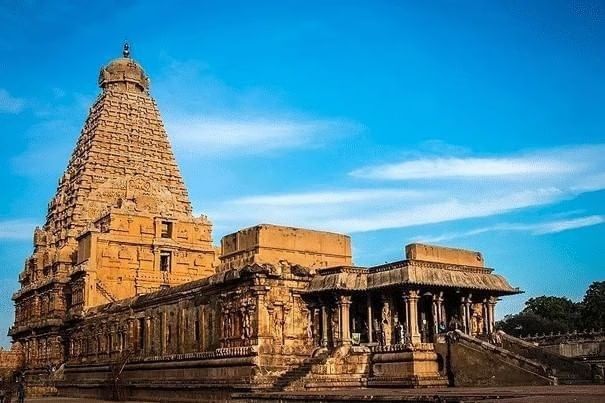
Why in News?
Prime Minister Narendra Modi’s speech at Gangaikonda Cholapuram on July 27, 2025, emphasized India’s indigenous democratic traditions, which predate the Magna Carta. This article revisits ancient electoral practices, particularly those under the Chola dynasty, highlighting their significance in today’s democratic discourse.
Key Takeaways
- India's democratic practices have deep historical roots, not merely colonial influences.
- The Chola-era electoral system exemplifies early forms of self-governance.
- The kudavolai system demonstrates an ancient approach to elections emphasizing transparency and fairness.
Additional Details
- Vaishali: An early republic in the 5th century BCE, showcasing participatory governance.
- Kautilya's Arthashastra: References local governance structures known as samghas, indicating a long-standing tradition of self-governance.
- The Uthiramerur Inscriptions: These inscriptions detail a sophisticated electoral framework established during the reign of Parantaka Chola in 920 AD, including:
- Ward Constitution
- Eligibility and disqualification norms
- Committee formation and functions
- Right to recall elected members
- Kudavolai System: A unique electoral process involving the drawing of candidates' names from a pot, ensuring impartiality.
- Strict Standards: The electoral system enforced high moral and administrative standards, including:
- Age requirements and property ownership for candidates
- Disqualifications for debt defaulters and individuals with moral taints
In conclusion, India's democratic traditions are deeply rooted in its civilizational history, as demonstrated by the Chola-era practices. Recognizing and reclaiming this legacy is vital for fostering a more ethical, participatory, and accountable political landscape in contemporary times.
National Designated Authority (NDA) to Enable Carbon Emissions Trading Regime
Why in News?
The Ministry of Environment, Forest and Climate Change has recently established a National Designated Authority (NDA) as a crucial step towards implementing a carbon emissions trading regime, in accordance with the provisions of the 2015 Paris Agreement.
Key Takeaways
- The NDA is a mandatory requirement under Article 6 of the Paris Agreement.
- Article 6 outlines the framework for carbon markets and emissions trading.
- The NDA will consist of a 21-member committee led by the Secretary of the Environment Ministry.
- It includes representatives from various ministries, including External Affairs, Steel, and Renewable Energy.
- Key responsibilities of the NDA include evaluating projects for emission reduction trading.
Additional Details
- Article 6: This article, passed during COP29 in Baku, Azerbaijan, defines how carbon markets can be established and operated among countries.
- NDA Responsibilities:
- Recommend activities for emission reduction unit trading.
- Modify these activities to align with national sustainable goals.
- Evaluate and authorize projects aimed at reducing emissions.
- Nationally Determined Contributions (NDC):India's commitments to reduce emissions include:
- A 45% reduction in GDP emission intensity by 2030 from 2005 levels.
- Ensuring 50% of electric power capacity comes from non-fossil fuel sources by 2030.
- Creating additional carbon sinks equivalent to 2.5-3 billion tonnes of CO2 by 2030 through afforestation.
The establishment of the NDA is a significant move towards strengthening India's commitment to international climate goals and facilitating a structured carbon trading market.
Cooperatives at Crossroads
Why in News?
The National Cooperative Policy, 2025 has ignited a significant conflict between the Centre and the State, with Kerala leading the charge against it. This dispute transcends mere policy disagreement, highlighting deeper issues of cooperative federalism, involving constitutional authority, political implications, and substantial financial stakes amounting to nearly ₹3 lakh crore in deposits.
Key Takeaways
- Kerala has labeled the National Cooperative Policy as unconstitutional, claiming it infringes on the State’s exclusive rights over cooperative governance.
- The Left Democratic Front (LDF) government accuses the BJP of attempting to gain control over Kerala’s cooperative landscape for political gain.
- Cooperatives in Kerala manage deposits totaling approximately ₹2.94 lakh crore, indicating their significant role in the local economy.
Additional Details
- Federalism at Stake: Cooperative societies are listed under the State List in the Constitution, yet the Centre is attempting to exert influence reminiscent of issues raised during the Multi-State Cooperative Societies (Amendment) Act, 2023.
- Historical Context: Kerala's cooperative institutions trace back to the early 20th century and have been integral to the socio-economic framework through the Kerala Cooperative Societies Act, 1969.
- Grassroots Importance: Primary Agricultural Cooperative Societies (PACS) are fundamental to the rural economy of Kerala, serving as vital credit sources.
- Political Opposition: The State Cooperation Minister, V.N. Vasavan, has condemned the policy as detrimental to the cooperative sector.
- Organized Resistance: The Kerala Primary Agricultural Cooperative Society Association has formally opposed the policy, reflecting widespread dissent.
- Workers’ Concerns: The Kerala Cooperative Employees Union (KCEU) has expressed fears that the Centre aims to transfer control of cooperatives to corporate entities.
- The cooperative sector in Kerala faces a credibility crisis due to various embezzlement scandals, notably the Karuvannur Service Cooperative Bank scam, which has shaken public trust and put the State government under scrutiny. In response, Kerala has amended its Cooperative Societies Act in 2023 to address these issues and enhance regulatory safeguards.
- In a move towards structural reform, Kerala has consolidated its district cooperative banks into the Kerala State Cooperative Bank, transitioning from a traditional three-tier credit structure to a more streamlined two-tier system, aimed at improving efficiency and financial stability.
- Looking ahead, Kerala's cooperatives stand at a new crossroads, faced with accelerated urbanization and evolving youth aspirations, alongside sectoral shifts in energy, technology, and health. Their ability to adapt will be crucial for maintaining economic resilience in the decades to come.
- In conclusion, Kerala’s cooperative movement, a historically essential component of rural credit and grassroots empowerment, is at a pivotal moment. The National Cooperative Policy, 2025, while framed as a reformist initiative, has highlighted critical fault lines in India's federal structure, intensifying tensions between the Centre and the State. Kerala must navigate its rich cooperative legacy while embracing modernization and transparency, and the Union must respect constitutional boundaries to maintain trust in the cooperative model.
Sports Governance Bill Clears Hurdle Amid BCCI’s Historic RTI Resistance
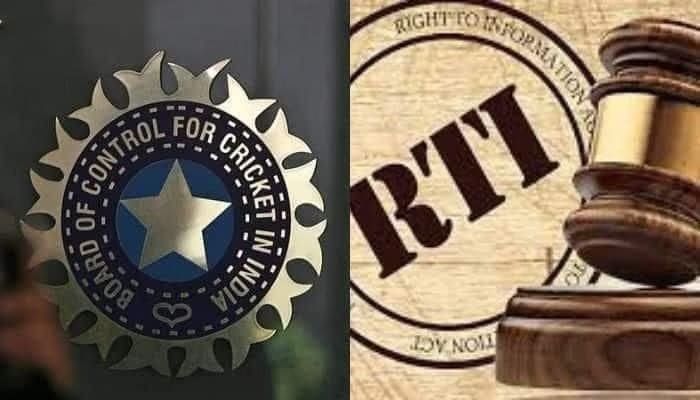 Why in News?
Why in News?
The Rajya Sabha has recently passed the National Sports Governance Bill, 2025, following its approval in the Lok Sabha. This legislative development has sparked significant debate, particularly concerning the Board of Control for Cricket in India (BCCI), which has historically resisted transparency measures under the Right to Information (RTI) Act.
Key Takeaways
- The National Sports Governance Bill aims to regulate national sports bodies and enhance transparency and accountability.
- The BCCI remains exempt from RTI obligations, as it does not receive direct financial assistance from the government.
- Opposition parties criticize the bill for excessively centralizing sports administration and favoring the BCCI.
Additional Details
- RTI Exemption for BCCI: The Bill defines a "public authority" under the RTI Act only for sports bodies that receive direct financial assistance from the government. Consequently, the BCCI, which does not receive such funding, is excluded from RTI requirements.
- BCCI’s Stance: The BCCI asserts it is a private, autonomous organization that does not qualify as a "public authority" under the RTI Act, citing its registration under the Tamil Nadu Societies Registration Act, 1975.
- Judicial Recommendations: Various judicial and quasi-judicial bodies, including the Law Commission of India and the Supreme Court, have recommended that the BCCI be classified as a public authority, citing its significant public functions.
- Implications of RTI Inclusion: If included under the RTI Act, citizens could access critical information regarding BCCI's operations, such as team selection criteria and financial contracts, thereby enhancing transparency.
The National Sports Governance Bill represents a pivotal step towards regulating sports bodies in India, aiming to align them with international standards while also addressing the ongoing concerns about the BCCI's transparency and accountability in its operations.
|
164 videos|798 docs|1153 tests
|
FAQs on Indian Polity and Governance: August 2025 Current Affairs - General Test Preparation for CUET UG - CUET Commerce
| 1. What is the concept of legal insanity and how does it affect judicial proceedings? |  |
| 2. How does the Yashoda AI Initiative aim to enhance education in India? |  |
| 3. What are the key provisions of the Constitution (130th Amendment) Bill? |  |
| 4. What are the challenges faced by the Election Commission in controlling election officials? |  |
| 5. What measures are being taken to promote a tobacco-free India? |  |
















